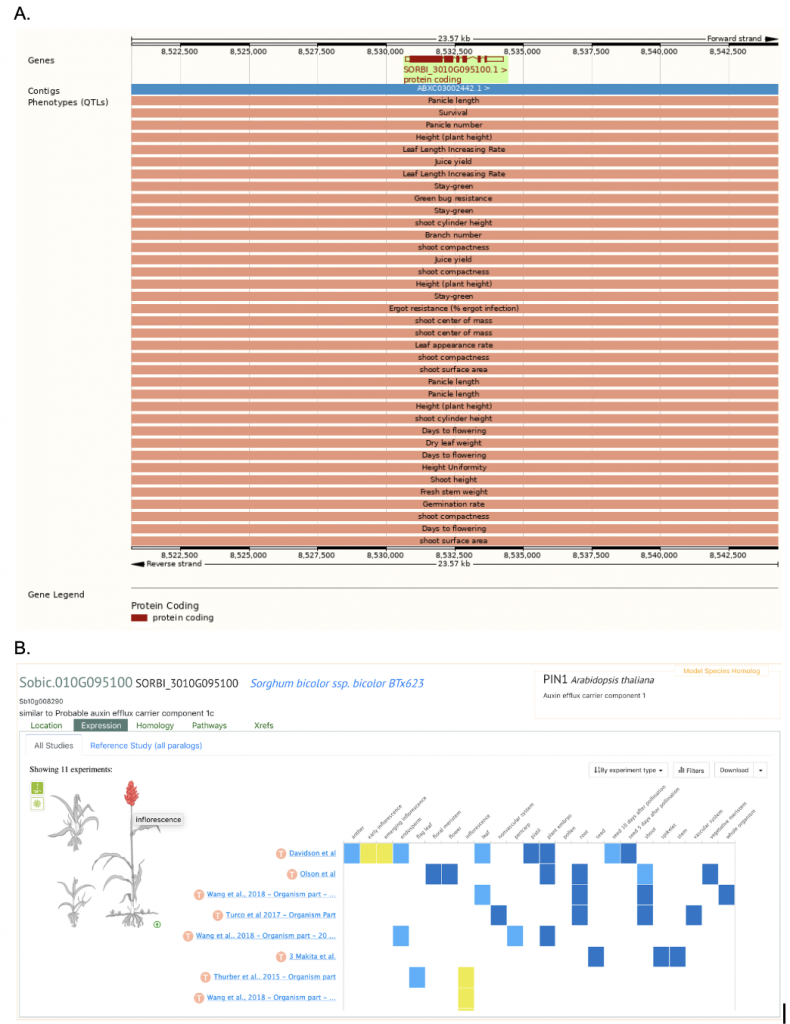Exploration into Genes Associated with the Stay-Green Trait in Sorghum
Global warming is expected to cause an increase in the frequency and intensity of droughts resulting in yield and economic losses in agriculture. Cereal plants rely on a drought adaptation mechanism known as the stay-green trait. Sorghum plants with this trait have leaves and stems which, in response to water scarcity, take longer to dry out and, as a result, grow for a longer period of time with a decreased chance of lodging and an increased yield. Although 45 stay-green quantitative trait loci (QTL) are known, the genes that regulate functions associated with stay-green have not been identified. Researchers from the University of Queensland, Texas A&M University and Agri-Science Queensland conducted research to explore how genetically modifying PIN genes in sorghum can affect mechanisms underpinning the stay-green drought adaptation phenotype. PIN genes control PIN-FORMED (PIN) proteins, secondary transporters that carry the growth hormone auxin from plant cells and regulate its distribution. Borrell et al. found that out of 11 sorghum PIN genes, 9 are within stay-green QTL. Using transgenic techniques, they showed that some PIN genes located in the QTL regions (Stg1 (SbPIN4), Stg2 (SbPIN2), and Stg3b (SbPIN1) ) had pleiotropic effects including canopy development, root architecture, and panicle growth. Differential expression analysis and crop simulation modeling suggest SbPIN2 can increase grain yield under drought.
SorghumBase Examples:
Stg1 (SbPIN4), Stg2 (SbPIN2), and Stg3b (SbPIN1)
- Sobic.010G095100 SORBI_3010G095100 closest to SbPIN1
- Sobic.010G216700 SORBI_3010G216700 closest to SbPIN2
- Sobic.003G235800 SORBI_3003G235800 closest to SbPIN4
PIN genes located within the Stg1 (SbPIN4), Stg2 (SbPIN2), and Stg3b (SbPIN1) QTL regions acted pleiotropically to modulate canopy development, root architecture, and panicle growth in sorghum, with SbPIN1, SbPIN2, and SbPIN4 differentially expressed in various organs relative to the non-stay-green control.

Reference:
Borrell AK, Wong ACS, George-Jaeggli B, van Oosterom EJ, Mace ES, Godwin ID, Liu G, Mullet JE, Klein PE, Hammer GL, McLean G, Hunt C, Jordan DR. Genetic modification of PIN genes induces causal mechanisms of stay-green drought adaptation phenotype. J Exp Bot. 2022 Aug 13:erac336. PMID: 35961690. DOI: 10.1093/jxb/erac336. See more
Related Project Website:
Oz Sorghum https://aussorgm.org.au/

